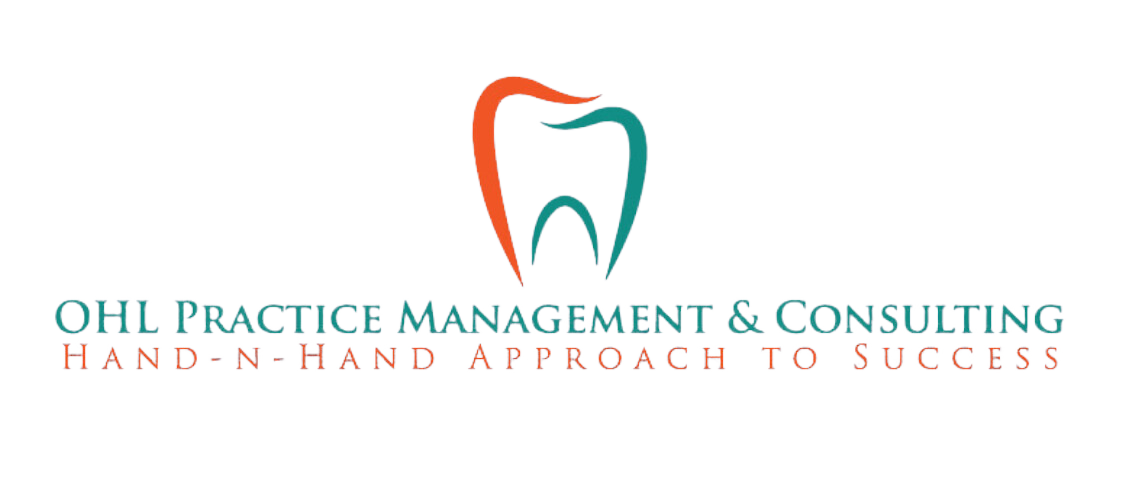The role of dental interventions in managing pediatric sleep apnea is both targeted and essential. Focusing on this aspect can mitigate long-term health impacts for affected children.
Firstly, early diagnosis is critical. Dental professionals can spot subtle signs of OSA during routine check-ups, such as teeth grinding or enlarged tonsils, which might not be apparent to parents or pediatricians. Acting on these observations early can prevent complications like developmental delays and behavioral issues.
Secondly, treatment customization is key. Since children’s needs and responses to treatment vary widely, interventions must be tailored. This could mean choosing between different types of oral appliances or deciding when to introduce them in the course of treatment, ensuring that each child receives the most appropriate care for their specific condition.
Lastly, continuous monitoring ensures long-term success. As children grow, their treatment needs can change. Regular follow-ups allow dental professionals to adjust treatments as needed and provide parents with the guidance necessary to manage their child’s condition effectively over time.
Introduction
Effectively managing pediatric OSA requires a proactive stance, and Ohl Practice Management & Consulting leads by example with their dedicated approach to early orthodontic treatments and personalized oral appliances.
Early detection is the first step to optimizing outcomes in children with OSA. The trained eye of a dental professional during routine examinations can uncover the often-subtle signs of sleep disruptions. Correctly identifying issues such as persistent snoring or difficulty breathing during sleep enables timely intervention, potentially alleviating the need for more invasive procedures down the line.
Second, customizing treatment is a cornerstone of effective management. Ohl Practice Management & Consulting embodies this principle by tailoring oral appliances and orthodontic work to each child’s unique dental anatomy and development. This level of personalization ensures that therapeutic measures are not only effective but also comfortable and well-tolerated by young patients.
Lastly, the commitment to adapt as needed offers sustainability in care. Regular follow-ups, adjustments to oral appliances, and orthodontic reassessments are part of the clinic’s thorough approach. This attention to detail guarantees that the evolving needs of growing children are met, ensuring long-term management of their OSA.
Key Challenge or Risk Area 1
The challenge in tackling pediatric OSA lies in the early and accurate identification of its symptoms. Misinterpretation of these symptoms as normal childhood behaviors contributes to delayed diagnoses and increases the risk of long-term health complications.
Dental professionals are on the frontline in spotting the early signs of OSA, such as habitual snoring and disturbances in nighttime breathing. Recognizing these signs in the context of a dental visit can trigger the necessary alarms for further investigation. It’s not uncommon for these symptoms to go unnoticed at home, so a dentist’s vigilance is critical.
Another pivotal aspect is acknowledging the seriousness of untreated OSA. Symptoms that may seem minor, like daytime drowsiness, could indicate broader concerns like compromised neurodevelopment and heart strain. These consequences underline the importance of catching the problem early, during a stage when interventions can be most effective with the least amount of invasiveness.
Finally, equipping parents with knowledge is a powerful preventive tool. Through dental visits, families can learn about the implications of untreated pediatric OSA. Educating caregivers empowers them to recognize symptoms early and seek timely care, potentially redirecting the child’s development onto a healthier path.
Key Challenge or Risk Area 2
Integrating dental interventions with a child’s growth demands precision and customization and is often obstructed by external factors like insurance policies. These elements form layers of complexity in treating pediatric OSA.
Timing is everything when it comes to interventions like palatal expansion. The best results come from implementing these treatments in sync with natural growth spurts. Not too early, to avoid ineffectiveness, and not too late, to prevent any irreversible development issues. This strategic timing helps maximize the treatment’s benefits and curtails the possibility of future health problems.
Insurance issues can pose a significant barrier. Many insurance companies see treatments such as palatal expansion as optional rather than medically necessary, which can delay the initiation of vital treatment. Advocating for the recognition of these interventions as critical health measures is an ongoing effort vital to ensuring timely care.
Additionally, personalizing care is non-negotiable. Each child’s needs are as individual as their development, demanding customized treatment plans. Ohl Practice Management & Consulting ensures that each child’s unique developmental factors are considered, crafting an approach that’s right for them, rather than a one-size-fits-all solution.
Key Challenge or Risk Area 3
Oral appliances represent a promising but underutilized tool in managing pediatric OSA. The challenge lies in ensuring proper fit, securing parent trust, and integrating these devices within a multidisciplinary treatment framework.
Fitting and regular adjustment of oral appliances are paramount due to the rapid growth of a child’s oral structure. These devices, when well-adjusted, can provide significant relief without surgery. Dental professionals must frequently evaluate and modify these appliances to maintain their effectiveness and comfort for the child, preventing any unnecessary irritation or diminishing of function.
Gaining parental trust is essential for treatment adherence. Clear, jargon-free explanations about how these appliances work and their benefits compared to more invasive treatments can reassure parents. Educating caregivers on the safe, non-invasive nature of oral appliances and how they fit into the broader care plan encourages their consistent use at home.
Lastly, a collaborative approach across disciplines enhances treatment outcomes. Dentists are an integral part of a wider healthcare team that may include pediatricians and sleep specialists. By coordinating with other professionals, dentists can ensure that oral appliances are effectively integrated into the child’s comprehensive health care plan, offering a consistent strategy for managing OSA from multiple angles.
Actionable Response or Strategic Solution
At Ohl Practice Management & Consulting, the response to pediatric OSA is grounded in proactive, dynamic treatment strategies that are tailored to each child’s needs, supported by collaborative care and clear communication.
Individualized care is the foundation of effective pediatric OSA management. Understanding that no two cases are the same, treatments are designed to cater to the specific nuances of each child’s condition. Whether it involves selecting the right oral appliance, adjusting treatment intensity, or integrating lifestyle changes, the practice’s commitment to customization ensures that every child’s plan is just as unique as their smile.
Team-oriented solutions magnify the impact of individual treatments. Ohl Practice Management cultivates a synergistic environment by involving a circle of care that includes dentists, sleep specialists, pediatricians, and most importantly, the families. This collective effort not only supports the child’s health journey but also creates a network of support that parents can rely on.
Additionally, continuous dialogue and education form the pillars of Ohl Practice Management’s approach. Open channels of communication ensure that parents are well-informed and active participants in their child’s care, leading to better understanding, adherence, and ultimately, health outcomes.

Decision Criteria or Escalation Triggers
At Ohl Practice Management, the approach to escalating treatments for pediatric OSA is methodical, grounded in a solid framework of assessment, vigilant monitoring, and judicious decision-making.
Firstly, a stringent assessment forms the backbone of OSA treatment decisions. With a defined set of benchmarks, clinicians gauge the impact of initial strategies, such as lifestyle modifications. Only when these measures fall short, and with clear evidence to support the need, will the team consider intensified interventions, like advanced oral appliance therapy.
Secondly, ongoing monitoring is key to responsive care. Regular assessments allow for early detection of changes in a child’s condition, guiding adjustments to the treatment path. This continual loop of feedback and adaptation helps ensure that care not only meets the immediate needs of the child but also anticipates future requirements.
Lastly, prudent judgment is central to the decision to escalate care. By weighing factors such as potential benefits against implications of more aggressive treatment approaches, the team at Ohl Practice Management ensures that any escalation in care is executed with deliberation, aiming for optimal child well-being above all.
Support Resources or Professional Guidance
Ohl Practice Management & Consulting delivers robust support and guidance for both families and medical professionals in the management of pediatric OSA, strengthening the community through education and advocacy.
Education plays a pivotal role in the management of pediatric OSA. Ohl Practice Management provides accessible materials that illuminate the signs and potential avenues for treatment. This outreach ensures that both parents and dental practitioners can identify symptoms early, understand the condition better, and feel empowered to seek or offer the appropriate interventions.
The need for advocacy cannot be understated, particularly in the realm of insurance coverage. The practice actively engages with insurance providers and policymakers to amplify the importance of recognizing and covering early interventions for pediatric OSA. This work helps remove financial barriers that might otherwise prevent children from receiving timely and necessary care.
In addition, Ohl Practice Management extends professional guidance by sharing the latest findings and best practices within the dental and medical communities. Through seminars, workshops, and consultations, they foster a culture of continuous learning and improvement that benefits the entire network involved in caring for children with OSA.
Preventive Measures or Best Practices
Ohl Practice Management embeds prevention into every aspect of care, with an emphasis on early assessment, lifestyle modification, and ongoing vigilance to protect children from OSA.
Early assessment is the first line of defense. During each dental check-up, a thorough evaluation of the child’s airway is conducted. This isn’t just routine; it’s a proactive measure that can catch potential issues before they become problematic. By keeping a lookout for signs such as difficulty breathing during sleep, the team can address concerns promptly, reducing the risk of OSA developing or worsening.
Lifestyle modifications play a critical role in prevention. Simple, actionable advice on good sleep practices and healthy nutrition can help reduce the likelihood of OSA. Ohl Practice Management coaches families on creating environments and routines that promote restful sleep, which is especially crucial for children’s growing bodies and developing minds.
Continuous watchfulness is essential as children grow, with practitioners at Ohl Practice Management remaining alert for any changes that could signal the onset or progression of OSA. By maintaining this careful oversight, they can adapt preventive measures to the child’s evolving needs, ensuring long-term respiratory health.
Conclusion
Ohl Practice Management & Consulting showcases the transformative power of dental expertise through its commitment to evidence-based, tailored care for pediatric OSA, setting a new standard in pediatric dental health management.
Their dedicated approach to diagnosing pediatric OSA thrives on precision and depth, meticulously combing through symptoms and identifying underlying causes. It’s not just about spotting problems but understanding them within the broader context of each child’s health and lifestyle, which can lead to more successful treatment pathways.
Treatment at Ohl Practice Management is never one-size-fits-all; it’s a nuanced journey designed to fit the unique profile of every young patient. From the careful selection of oral appliances to considerate scheduling of interventions in line with developmental milestones, each decision is made to benefit the child’s current and future health.
Finally, their ongoing management practices speak to a larger mission: a commitment to continual care and adaptation, reflective of a proactive and forward-thinking mindset. With each follow-up visit, Ohl Practice Management reinforces its role not merely as a provider but as a trusted partner in their patients’ long-term well-being.
Don’t let uncertainty hold you back. Schedule a consultation today and start building a thriving dental sleep practice with Ohl Consulting!
Ohl Practice Management & Consulting
connect@ohlpracticeconsulting.com
FAQ’s
How can a dentist help with my child’s sleep apnea?
Dentists can spot early signs of sleep apnea during regular check-ups, such as teeth grinding or mouth breathing, and provide non-invasive treatments like oral appliances that improve your child’s nighttime breathing and overall sleep quality.
Are dental treatments for OSA covered by insurance?
Many dental solutions for OSA, like oral appliances, are increasingly recognized as essential treatments. We can help advocate for coverage and navigate insurance policies to ensure your child receives the necessary care.
Is an oral appliance comfortable for children?
Yes, oral appliances are custom-fitted to be comfortable for your child. We’ll adjust the appliance as your child grows to maintain comfort and effectiveness, ensuring a stress-free experience while managing their sleep apnea.





